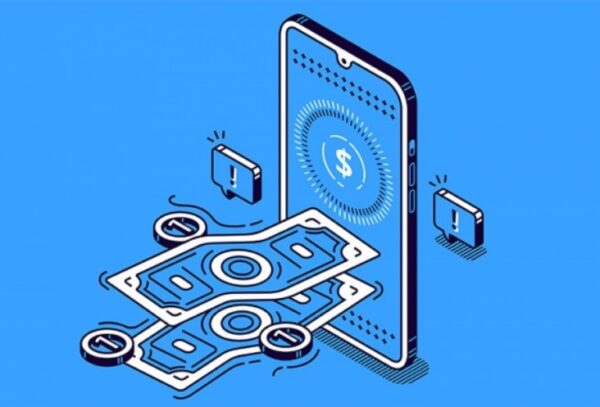To keep pace with the fast-paced nature of consumer lending, future-forward lenders turned to digital lending in droves. What sprouted from this rich soil was an improved user experience, streamlined lending processes, and business intelligence and analytics, a mere stone’s throw away. By leveraging technology, businesses and individuals can also gain access to capital swiftly, all while managing credit risk and ensuring regulatory compliance.
For those brick-and-mortar lenders failing to keep up with the high-tech times, digital lending is a lending process that takes place online and is virtually automatic. It relies on patented tech to do credit evaluations and authenticate loan applications. Typically, all of this takes place via a dedicated online platform or the lender’s digital app.
With advances in the world of financial and online payments, it has become inevitable for the lending process to undergo the same evolution. What’s more? Digital lending is better than the conventional lending process. It offers conveniences like fact-based loan disbursement decisions and compliance throughout the loan repayment period.
Future-forward lenders can capitalize on the following benefits below when using an online loan management system from a third party like LoanPro. Via automation and data visibility, loan management systems can merge seamlessly with existing systems and scale accordingly.
1. Digital lending offers quick yet effective decision making

The world moves at a fast pace. The average customer wants excellent service, and they want it fast. To no surprise, the loan industry is no exception. With “order now” buttons and two-day deliveries dominating the market industry-wide, the average loan applicant has no desire to wait days before getting approval on their personal loans.
These demanding borrowers want instant loans. The current reality means unnecessary delays in the evaluation and approval process can tarnish a lender’s reputation. If it takes too long, loan applicants will find a competing business that can provide faster services.
By embracing the automation that digital lending offers, future-forward lenders can make loan approvals happen faster. There’s no need to wait out time-intensive verifications. With an online lending platform, lenders can automatically run documents, credentials, and applicant data through a preset verification process.
2. Consistent loan approval decisions

Human bias is an evil that lenders must actively battle in their day-to-day. As much as lenders try to eliminate it from financial decision-making, it’s one of the most notable flaws in a manual lending system.
One of the primary benefits of digital lending is that it replaces human thinking with preset decision rules. The digital lending system will put every loan application under the microscope of preset guidelines. By doing so, future-forward lenders can guarantee consistent decision-making.
The digital system ensures each applicant’s evaluation is in line with pre-determined risk limits. Furthermore, it guarantees that every customer receives optimal loan terms with zero human bias.
The best part is a digital lending system can offer consistent results regardless of the volume of applications. The system will follow already-configured risk limits and credit policies every time.
3. Digital lending offers lenders increased accessibility

For future-forward lenders, digital lending can double (sometimes triple) an available customer base. It suddenly means there are no location-dependent barriers stopping borrowers from applying for loans.
A digital lending system allows borrowers to submit loan applications from anywhere in the world—and at any time. The increased accessibility doesn’t just apply to location. Since the process is online, future-forward lenders can streamline their services, provide customer-centric user experiences, and smooth out kinks in application procedures.
While a manual lending system faces constraints, such as data entry errors and limited human resources, the digital lending system is error-free. From anywhere in the world, lenders can validate borrower info and provide lending services.
4. Data analytics for improvement and profitability

While the primary goal of every future-forward lender is to satisfy its customers, the secondary goal is to increase profitability. To do that, lenders will need to be agile enough to pivot and make forward-thinking decisions. Digital lending systems come with a potential for analytics that can help future-forward lenders make improved business decisions. These systems generate tons of borrower and operation-related data.
By sitting through these data, lenders can gain insights for optimizing their business process. The best part is the possibility to monitor applications over any time frame. Depending on the decision at hand, lenders can use weekly, monthly, or yearly data to inform business decisions. For instance, quarterly analysis can reveal seasonal upturns in loan applications. With this insight, future-forward lenders can allocate resources to keep up with increased demands. By analyzing borrower characteristics, lenders can get actionable data on credit tiers, demographics, and loan sources.
With access to this information, lenders can revamp their marketing strategy for more conversions. Another advantage of analytics is an improvement in the lending process. Comprehensive analysis can highlight areas where digital workflow can replace manual input and improve business processes. Finally, analytics can drive profitability by helping lenders identify characteristics that can impact loan performance. Digital lending analytics can answer questions like:
- What factors lead to payment defaults?
- Will easing credit policies convert to more loans?
- Is there a need to tighten credit policies for risk management purposes?
With answers to the questions above, future-forward lenders can tweak credit policies for better risk management, increased loan captures, and overall profitability.
5. Improved business efficiency

Digital lending offers a fully automated loan system. Future-forward lenders can leverage automation and deploy much-needed resources for new opportunities. By doing so, digital lending can reduce business overhead by up to 50%. The traditional lending process ranks low on the efficiency scale.
The over-dependence on physical interaction and human input makes it an unappealing process. During traditional lending, the borrower may have to pay a visit to a lender multiple times to fill out forms and manually submit copies of different documents.
There’ll be a need to deploy a workforce to verify forms and documents before loan approvals from the lender’s perspective. It’s a process that can take a few days at best. Digital lending is a win-win for future-forward lenders and borrowers. Lenders can save money on human resources and overhead while offering top-quality services.
Before you go
Modern technology is changing the financial industry. The evolution of digital lending is disrupting the conventional lending model that used to be the mainstream. Digital lending systems can handle loan applications in their entirety. From the application process to approval and compliance, harnessing digital lending means future-forward lenders can go hands-off with the lending process. By doing so, lenders can enjoy all of the benefits above.



















